- Home
- Tom Clancy
SSN Page 8
SSN Read online
Page 8
They were also responsible for some of the more delicate procedures. The engineering laboratory technicians first had to transfer a quantity of nuclear waste materials generated during their periodic sampling of the reactor coolant to ensure its purity. Once this transfer was complete, they would assist in refilling the coolant charging system’s pure water tanks with CPW. This “controlled pure water” was generated on board McKee by passing SSN discharged coolant from start-ups through the submarine tender’s massive ion beds. The coolant was no longer radioactive, yet it was controlled because of its source. This way the water from the SSNs alongside was constantly recycled rather than discharged to the environment.
While all this was going on, with the executive officer supervising the transfer of the patrol report and the engineering officer overseeing the power plant, the combat systems officer and his people had their hands full. The combat systems officer was responsible for readying the vertical launch tubes for removal of the spent Tomahawk loading canisters so that the tubes could be reloaded. Others of his crew had to ready the three decks between the weapons-loading hatch and the torpedo room.
Mack smiled to himself, remembering how well it had all gone. Those activities had mainly been Cheyenne‘s responsibility, and they had all occurred on their first day alongside McKee. After that, Cheyenne’s officers and crew had been able to rest while the refit crew took over the rest of the normal operations.
After the rigors of their contested ingress and transit of the South China Sea and the relatively simple TLAM-C and TLAM-D attack on the Chinese submarine base at Cuarteron Reef, the officers and men of Cheyenne appreciated this rest a great deal. Even more, they appreciated the assistance of McKee’s crew. In peacetime, a tender like McKee would not have been employed for such a short refit. But this was war now, and peacetime rules did not apply. Especially since it appeared that Cheyenne would be the only U.S. submarine in the South China Sea for a good while.
Cheyenne’s officers and crew understood this. “No rest for the weary,” as the saying went. It was simply an extension of a policy established for returning war patrol crews in Pearl Harbor during World War II. The only difference was that this time there was no relinquishment either of command or of the individual officers’ responsibilities. Refits like this one were merely opportunities for rest and recreation, unlike the twenty-four-hour refit/repair periods that so many submarine crews had experienced during peacetime.
All of which meant that the policy was logical and intelligent — but policy was generally not made by the people it most directly affected. Cheyenne’s officers and crew agreed with the policy, and they appreciated it — but they appreciated the hard work and extra effort put forth by the sailors and engineers from McKee even more.
McKee was good, with a seasoned crew, and the refit had gone well. Cheyenne was restocked and resupplied. The executive officer, engineer officer, the remaining junior officers, and their leading petty officers would attend to the final details of turnover from the refit crew. As soon as this briefing was over, Mack and his officers would be ready to return to active patrol.
Entering the war room, Mack immediately noticed that the eagles (captain’s insignia) on the collar of the Commander Submarine Group Seven (CSG 7), also known as Commander Task Force Seventy-four (CTF 74), had been replaced with single stars. Mack had expected that. With war declared in his theater of operations, it was standard procedure for the commodore, as he was addressed during peacetime, to be frocked to rear admiral, lower half.
After exchanging greetings with the captain of McKee and CTF 74, Mack and his officers quietly took their seats in the front row as the briefing officer dimmed the lights for his presentation of the bomb damage assessment at Cuarteron Reef.
The satellite photography provided clear evidence that each TLAM-C and TLAM-D, which had been launched from Cheyenne’s vertical-launch tubes at a comfortable, uncontested datum north of the Spratly Island chain, had reached a mark. Not necessarily the intended mark, but at least damage enough to put the Chinese submarine base out of business for a while.
Mack had seen the smoke and fire from the explosions through the high-power, 16X magnification of the Type 18 periscope, but, because the Chinese submarine base was beyond the horizon of the periscope’s height of eye, he hadn’t been able to discern the actual targets that were hit. He listened carefully as the briefing officer said that the main repair facility and weapons stowage buildings had been hit as planned, with 1,000 pounds of explosives per Tomahawk.
The national command authority and the USCINCPAC target staff had done a nice rush job in providing both the terrain contour matching (TERCOM) data for the entire length of the Philippine Island of Palawan, and the final, more accurate, digital scene-matching area correlation (DSMAC) data, especially since Palawan was not previously a high-priority digital terrain-data-collection effort. With the Tomahawk Block III Global Positioning System (GPS) providing updates to the missiles, the three hundred-nautical-mile flight from the last DSMAC update on the southwest tip of Palawan had not degraded the targeting accuracy.
As the briefing officer went over this, Mack found himself thinking that the last-minute sighting of missiles arriving at Cuarteron Reef from the east must have been totally confusing to the Chinese. Moments later, the briefing officer confirmed that guess. If the Chinese had known Cheyenne’s position, they would have sent some of their assets after her. But that hadn’t happened. Although the base infrastructure was essentially out of commission, satellite imagery showed that a number of Chinese submarines and a few surface ships remained in port, still moored to only slightly damaged piers.
Mack knew that the Chinese would be able to make some guesses about Cheyenne’s position. Because the missiles had not arrived from the west, the Chinese remaining in port would assume that Cheyenne was lingering in the safety of deep water to the north of the Spratlys. And they’d be right… but only to a point.
Cheyenne had indeed launched from the north, but she was not lingering in the area, having entered the Sulu Sea from the north via the Mindoro Strait. Mack knew that the delay in the Chinese exodus from Cuarteron Reef should give Cheyenne the opportunity to reposition from her safe haven alongside McKee in the Sulu Sea. They should end up in their prime location west of Cuarteron Reef before the Chinese decided to deploy their submarines and surface ships to the safety of the sea. Attacks from Cheyenne off Cuarteron Reef also might make the Chinese believe they had more than Cheyenne with which to contend, a ploy which the submarine force had used in previous conflicts.
The briefing officer continued with the latest status of the location of the USS Independence Battle Group and background on the Battle Group transit into the South China Sea. Prior to Mack’s rendezvous and reporting in as the SSN(DS), Independence had steamed to the southern coast of Borneo, having passed through the Lombok Strait with her AO (oiler) and AE (ammunition ship), while several of her surface ships, including the two Ticonderoga class cruisers Gettysburg and Princeton, had slipped through the Sunda Strait to the west under the cover of darkness the night before.
The CVBG admiral had wisely split his forces to ensure that all his eggs were not in the same basket should the Chinese have sympathizers, or even their own soldiers, on Java, Sumatra, or Bali. Both the Lombok and Sunda Straits were narrow enough that even small-arms fire from the cliffs overlooking the straits could inflict damage to personnel on deck.
At any rate, the no-longer-covert show of force from the CVBG, which rendezvoused in the Java Sea near Belitung Island, was intended to flush the Chinese at Cuarteron Reef to sea for attacks on the Battle Group.
The briefing officer went on to explain that once Independence had recovered the S-3 aircraft, which had provided air cover of both straits, the Battle Group steamed north to a position northwest of Natuna Island. There they maintained position until Cheyenne had rendezvoused and notified the submarine element coordinator (SEC) and the anti-submarine warfare commander (ASWC), c
o-located on board Independence with the SEC’s submarine advisory team (SAT), that the time was right for the Battle Group to continue safely to the Spratly Islands without fear of Chinese submarine attacks.
The orders for Cheyenne at this stage of the naval war against China were clear and simple: unrestricted submarine warfare on Chinese submarines and surface warships, with the main targets expected to be those departing Cuarteron Reef.
Mack had known this, of course. Because there was a strong possibility of encountering Chinese warships, Cheyenne had taken on four UGM-84 Harpoon missiles instead of a full load of twenty-six Mk 48 ADCAP torpedoes. In addition, a mix of TLAM-C and TASM had been reloaded into the twelve vertical-launch tubes: TLAM-C in case another land attack would be authorized while Cheyenne was at sea, and TASM in case they needed their longer range against the Chinese surface ships. The TASM had an extra two hundred nautical miles of range over the Harpoon. Either way, for those long range shots, over-the-horizon targeting from Battle Group aircraft would be necessary unless the Chinese surface ships themselves provided enough radar targeting information to Cheyenne’s ESM antenna for bearing-only launches.
So far, there was no need for TLAM-N, which would be a waste on the relatively tiny islands. Besides, the digital terrain data of the Chinese mainland itself, which met the Tomahawk TERCOM and DSMAC data requirements, more fully supported TLAM-N. Unlike the Spratlys, data on the mainland had been accumulated and processed years earlier, in less of a rush, against the possibility of future U.S. nuclear bomb attacks on China.
The briefing was professional and highly detailed. Mack came away with all his questions answered, and a clear sense of Cheyenne‘s mission. But no briefing was ever absolutely complete. The briefing officer could not pass along information he didn’t have, and on the last day of Cheyenne’s refit naval intelligence had not discovered — or, as sometimes happened, had somehow neglected to pass on — the fact that there was a new player in the area. The Chinese already had a large fleet of submarines purchased from the economically ailing Russians, and that fleet had just gotten bigger. The Chinese had recently acquired a Russian Alfa class SSN, and the Alfa was now on patrol in the South China Sea.
Mack didn’t know about the Alfa yet, but he did know that his submarine and his crew were ready for anything the Chinese cared to throw at them, though with the sheer numbers of assets the Chinese had hunting them, Cheyenne would have to be cautious. The Chinese had the advantage of being used to dealing en masse; Cheyenne had the advantage that their enemy obviously had no coordination of surface and subsurface forces — something Mack had noted in his previous encounters.
After the briefing, Mack’s officers went back to Cheyenne to get her ready for departure. Mack stayed behind for a little while longer.
Mack met with the McKee captain and CTF 74 in the admiral’s sea cabin. Cheyenne was facing the possibility of shallow water operations, and her crew needed to prepare for that. Shallow water operations were difficult and dangerous, and there had simply been no opportunity to practice before Cheyenne was ordered to ready herself for deployment.
In the admiral’s sea cabin, Mack reported to the other two officers that after departure, Cheyenne’s crew would practice shallow water, high speed maneuvering, and shallow water towed-array operations first. That way, if the TB-16 array were to touch bottom before their proficiency had peaked, the soft bottom of the Sulu Sea would ensure that the array would be undamaged. Mack needed to ensure that his diving officers, helmsmen, and planes-men were ready so that they would not overreact during high speed, shallow water maneuvers, and either broach the ship or drag the propeller and lower rudder through the bottom. Mack knew that it didn’t take much angle for a 360-foot submarine in 20 fathoms of water to subject itself to the dangers of the surface or the ocean bottom.
In addition, Mack requested and received permission to use the McKee captain’s gig in their exercises. This would provide an adequate surface target for active sonar detection and tracking in the irregular contours and the varying wind driven thermal gradients. Mack would use the gig to practice active sonar tracking with the BSY-1 spherical array at low power and short pulse lengths and with the higher-frequency MIDAS under-ice and mine-hunting sonar as they approached the Balabac Strait south of Palawan.
Cheyenne would have to wait for the rocky bottom and shoals off Cuarteron Reef to once again be their proving grounds should the Chinese submarines decide not to venture forth into deep water. The Captain hoped MIDAS would be able to distinguish between the coral reefs and the anechoic coatings of the Chinese submarines. But then, active sonar would be used only if Cheyenne’s presence were otherwise known.
There was one other point Mack had to bring up. He liked to assume that the Chinese had equivalent overhead satellite imagery capability, and he was concerned for McKee’s safety.
The admiral advised him not to worry, however, since they intended to weigh anchor shortly after Cheyenne’s departure and would periodically relocate outside the Chinese intelligence satellites’ footprints. The actual location of the next rendezvous would be provided to Cheyenne as soon as it was decided upon. It might even be in port in Brunei, or off that coast, where carrier air protection could be afforded both McKee and Cheyenne during their next reload period.
Mack was pleased to hear that — and doubly pleased to know that chances for another reload were good — but he also knew that it would only be true if he could keep the Chinese submarines away from the basically defenseless McKee before the Independence Battle Group arrived to relieve him of the burden of protecting the tender.
* * *
Shortly after getting under way from alongside McKee, Cheyenne quietly submerged. They weren’t scheduled to come to the surface again for quite some time — and, depending on how much action they saw and how well they fared in Cheyenne’s next war patrol off Cuarteron Reef, it might be even longer before they saw McKee again.
As he had briefed his admiral, Mack made sure that they practiced the shallow water, high speed maneuvering en route. This maneuvering was not unlike flying an airplane — even some of the terminology was similar. In deep water, where the automatic depth-control system would frequently be used, the submarine’s vertical position in the water column was referred to as “depth.” During these maneuvers, however, the term was “altitude,” with added emphasis on maintaining a comfortable safety margin or altitude in the water column above the ocean bottom. To help with this, the upward-looking beams of the under-ice sonar, MIDAS, continually displayed the distance to the surface, while the secure fathometer, with its narrow sonar beam, provided the altitude information.
As Mack had hoped, the McKee captain’s gig turned out to be a useful target for active sonar tracking. In addition, it provided a source of sonar passive tonal information. In shallow water like this, the TB-16 towed array’s entire 2,600-foot tow cable, with its 240 feet of hydrophones at the end, could not be totally deployed. Instead, it would be deployed at a “short stay,” an optimum length for all hydrophones to be at some distance away from its own ship tonals, yet short enough to ensure that it remained off the bottom during maneuvers, its own “towed-array altitude.”
The longer TB-23 thin-line array, with its 960 feet of hydrophones, would remain stowed for these war patrol shallow water operations, thus ensuring its availability for deepwater tracking operations when — and if — the Chinese ventured into the deeper waters of the South China Sea. The depths northwest of the Spratly Islands, ranging to over 15,000 feet, were ideal for convergence zone tracking of the noisy Chinese submarines while they were running at high speeds.
Cheyenne had nearly completed her exercises when Mack heard over the speaker at the periscope stand, “Captain, radio, incoming flash traffic!”
Proceeding quickly to the radio room, he arrived in time to see the printer spitting out new orders. Cheyenne was to proceed at best speed to a location west of Cuarteron Reef. Overhead imagery had shown that the Chinese
were stirring, probably preparing to deploy under cover of darkness, which was only hours away.
Mack was ready. Before beginning the high speed, shallow water maneuvers, he had decided that Cheyenne should not dally inside the Sulu Sea. Instead, he had decided to continue west while conducting the proficiency training, and now he was doubly glad that he had made that decision.
Cheyenne had earlier released the captain’s gig to return to McKee. Now, having already cleared Balabac Strait, deep water was nearby, so the captain used the radiomen’s microphone to pass the order, “Officer of the deck, Captain, shift main coolant pumps to fast speed and then proceed to flank speed. Make your depth four hundred feet.”
The OOD repeated the captain’s order verbatim, then ordered maneuvering to shift the main coolant pumps to fast speed. The OOD could have accomplished the same thing by ordering flank on the engine order telegraph, a “jump bell,” but that method, which was faster than ordering maneuvering to shift the coolant pumps, was saved for when speed was of the essence… as in torpedo evasion.
Cheyenne arrived northwest of West Reef shortly after nightfall, remaining outside the 100 fathom curve for the time being. Upon receiving the report from the officer of the deck that they were on station, Mack proceeded to the control room.
“Make preparations to come to periscope depth,” he said.
After acknowledging the captain’s order, the OOD slowed to two thirds and brought Cheyenne up to 130 feet, above the layer, and cleared baffles. He then advised the captain that he had no sonar contacts and was ready to proceed to periscope depth.
“Very well,” Mack replied. “Come to periscope depth.”
“Come to periscope depth, aye, sir. Sonar, radio, conn, proceeding to periscope depth.”

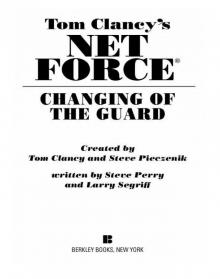 Changing of the Guard
Changing of the Guard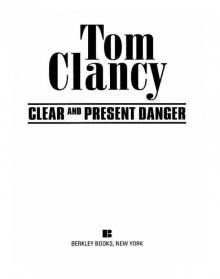 Clear and Present Danger
Clear and Present Danger Hounds of Rome
Hounds of Rome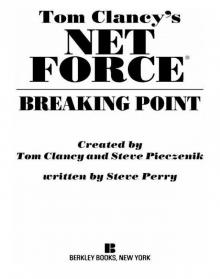 Breaking Point
Breaking Point Tom Clancy's Jack Ryan Books 7-12
Tom Clancy's Jack Ryan Books 7-12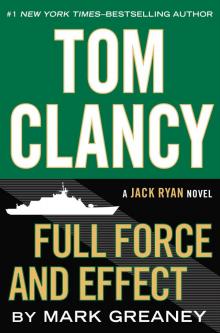 Full Force and Effect
Full Force and Effect The Archimedes Effect
The Archimedes Effect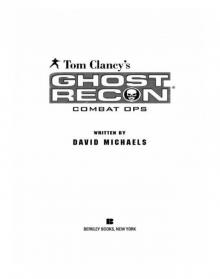 Combat Ops
Combat Ops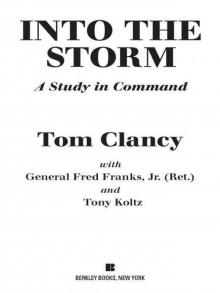 Into the Storm: On the Ground in Iraq
Into the Storm: On the Ground in Iraq Under Fire
Under Fire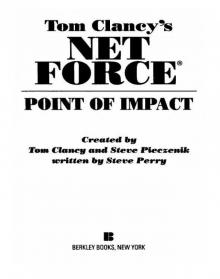 Point of Impact
Point of Impact Red Rabbit
Red Rabbit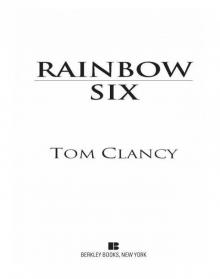 Rainbow Six
Rainbow Six The Hunt for Red October
The Hunt for Red October The Teeth of the Tiger
The Teeth of the Tiger Conviction (2009)
Conviction (2009)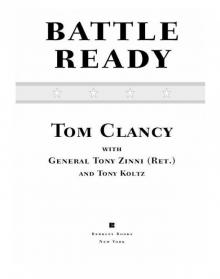 Battle Ready
Battle Ready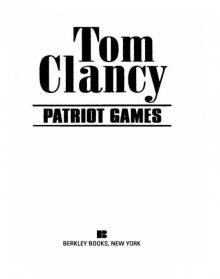 Patriot Games
Patriot Games The Sum of All Fears
The Sum of All Fears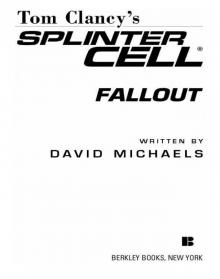 Fallout (2007)
Fallout (2007) Red Storm Rising
Red Storm Rising The Cardinal of the Kremlin
The Cardinal of the Kremlin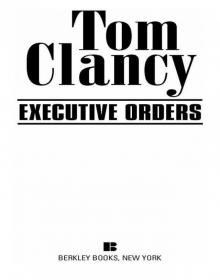 Executive Orders
Executive Orders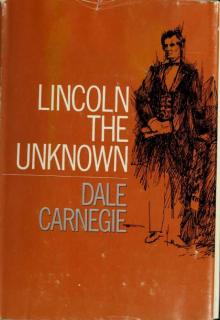 Lincoln, the unknown
Lincoln, the unknown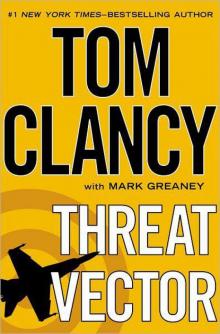 Threat Vector
Threat Vector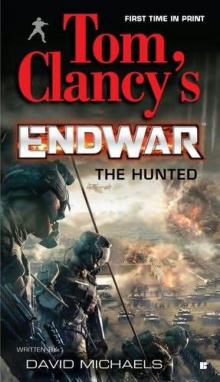 The Hunted
The Hunted Shadow Warriors: Inside the Special Forces
Shadow Warriors: Inside the Special Forces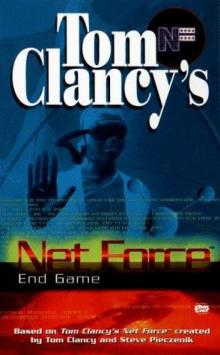 End Game
End Game Special Forces: A Guided Tour of U.S. Army Special Forces
Special Forces: A Guided Tour of U.S. Army Special Forces Locked On
Locked On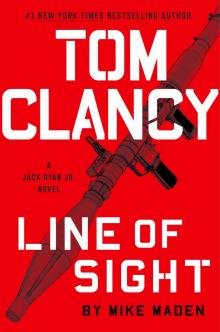 Line of Sight
Line of Sight Tom Clancy Enemy Contact - Mike Maden
Tom Clancy Enemy Contact - Mike Maden Fighter Wing: A Guided Tour of an Air Force Combat Wing
Fighter Wing: A Guided Tour of an Air Force Combat Wing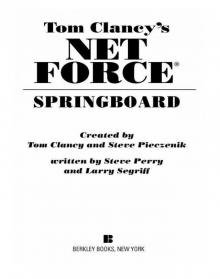 Springboard
Springboard Line of Sight - Mike Maden
Line of Sight - Mike Maden EndWar
EndWar Dead or Alive
Dead or Alive Tom Clancy Support and Defend
Tom Clancy Support and Defend Checkmate
Checkmate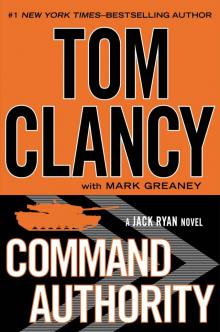 Command Authority
Command Authority Carrier: A Guided Tour of an Aircraft Carrier
Carrier: A Guided Tour of an Aircraft Carrier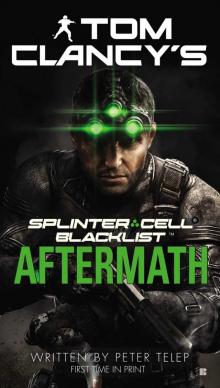 Blacklist Aftermath
Blacklist Aftermath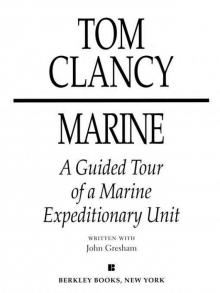 Marine: A Guided Tour of a Marine Expeditionary Unit
Marine: A Guided Tour of a Marine Expeditionary Unit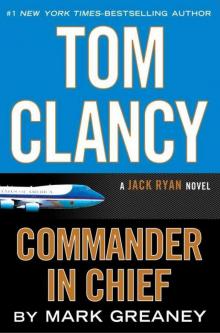 Commander-In-Chief
Commander-In-Chief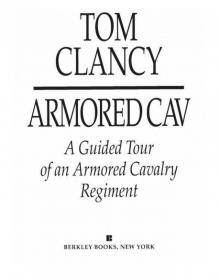 Armored Cav: A Guided Tour of an Armored Cavalry Regiment
Armored Cav: A Guided Tour of an Armored Cavalry Regiment Tom Clancy's Jack Ryan Books 1-6
Tom Clancy's Jack Ryan Books 1-6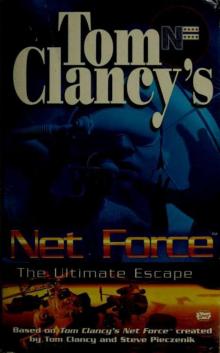 The Ultimate Escape
The Ultimate Escape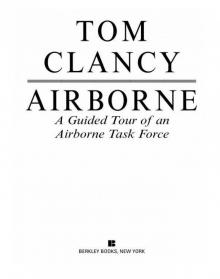 Airborne: A Guided Tour of an Airborne Task Force
Airborne: A Guided Tour of an Airborne Task Force Debt of Honor
Debt of Honor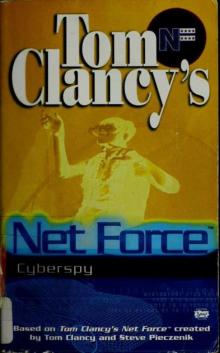 Cyberspy
Cyberspy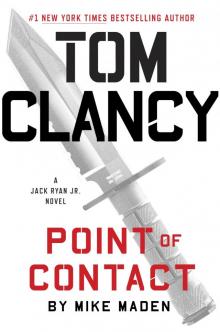 Point of Contact
Point of Contact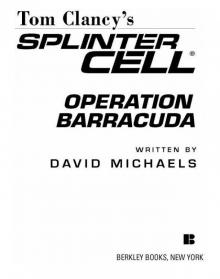 Operation Barracuda (2005)
Operation Barracuda (2005)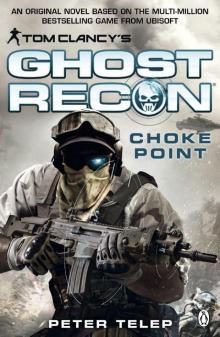 Choke Point
Choke Point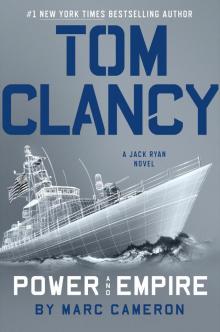 Power and Empire
Power and Empire Every Man a Tiger: The Gulf War Air Campaign
Every Man a Tiger: The Gulf War Air Campaign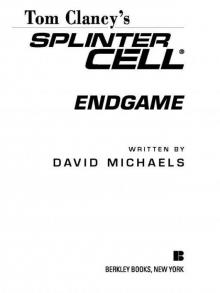 Endgame (1998)
Endgame (1998)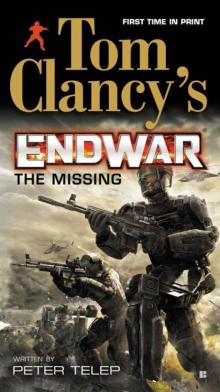 EndWar: The Missing
EndWar: The Missing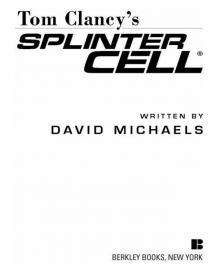 Splinter Cell (2004)
Splinter Cell (2004) The Great Race
The Great Race True Faith and Allegiance
True Faith and Allegiance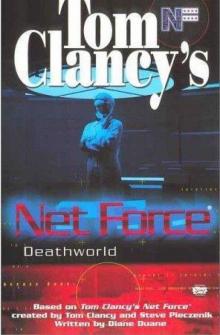 Deathworld
Deathworld Ghost Recon (2008)
Ghost Recon (2008)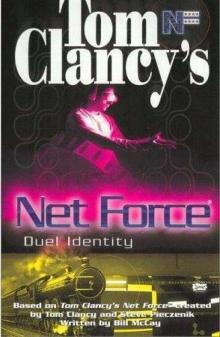 Duel Identity
Duel Identity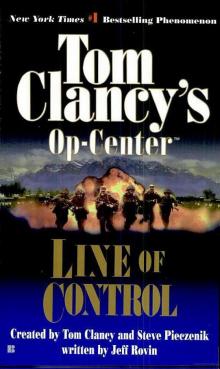 Line of Control o-8
Line of Control o-8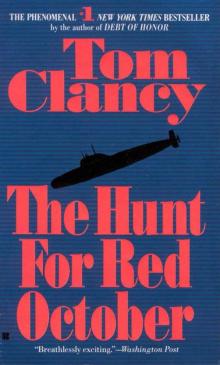 The Hunt for Red October jr-3
The Hunt for Red October jr-3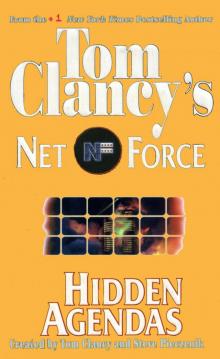 Hidden Agendas nf-2
Hidden Agendas nf-2 Acts of War oc-4
Acts of War oc-4 Ruthless.Com pp-2
Ruthless.Com pp-2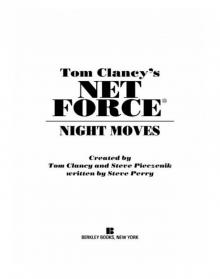 Night Moves
Night Moves The Hounds of Rome - Mystery of a Fugitive Priest
The Hounds of Rome - Mystery of a Fugitive Priest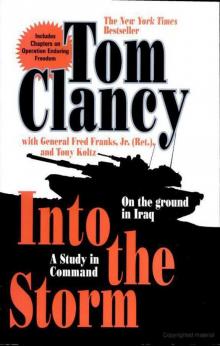 Into the Storm: On the Ground in Iraq sic-1
Into the Storm: On the Ground in Iraq sic-1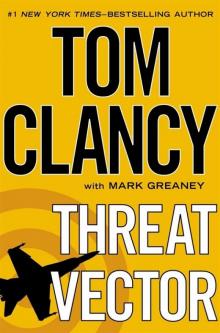 Threat Vector jrj-4
Threat Vector jrj-4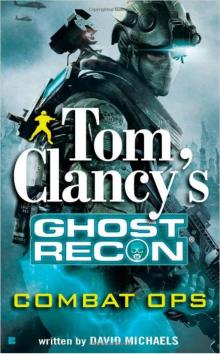 Combat Ops gr-2
Combat Ops gr-2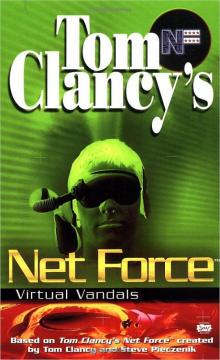 Virtual Vandals nfe-1
Virtual Vandals nfe-1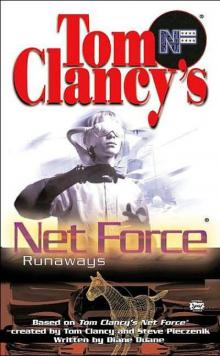 Runaways nfe-16
Runaways nfe-16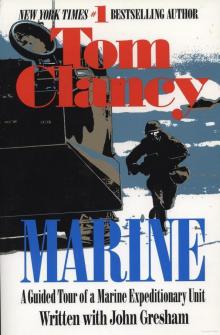 Marine: A Guided Tour of a Marine Expeditionary Unit tcml-4
Marine: A Guided Tour of a Marine Expeditionary Unit tcml-4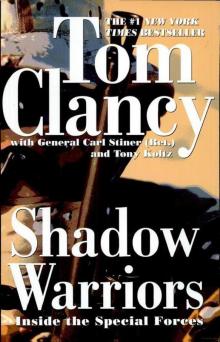 Shadow Warriors: Inside the Special Forces sic-3
Shadow Warriors: Inside the Special Forces sic-3 Jack Ryan Books 1-6
Jack Ryan Books 1-6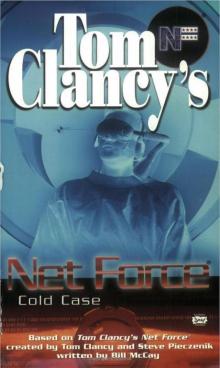 Cold Case nfe-15
Cold Case nfe-15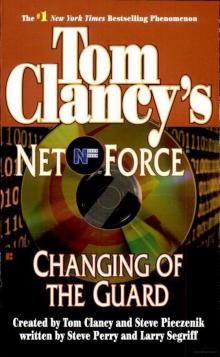 Changing of the Guard nf-8
Changing of the Guard nf-8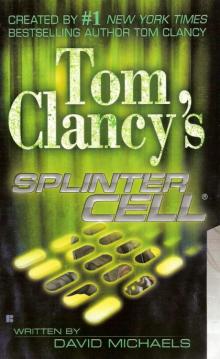 Splinter Cell sc-1
Splinter Cell sc-1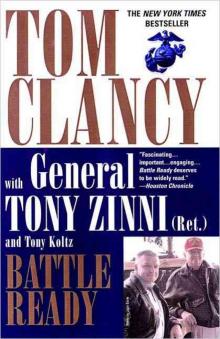 Battle Ready sic-4
Battle Ready sic-4 The Bear and the Dragon jrao-11
The Bear and the Dragon jrao-11 Fighter Wing: A Guided Tour of an Air Force Combat Wing tcml-3
Fighter Wing: A Guided Tour of an Air Force Combat Wing tcml-3 Patriot Games jr-1
Patriot Games jr-1 Jack Ryan Books 7-12
Jack Ryan Books 7-12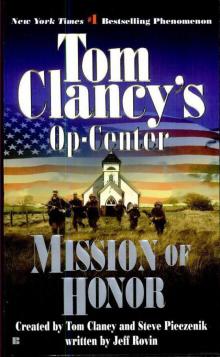 Mission of Honor o-9
Mission of Honor o-9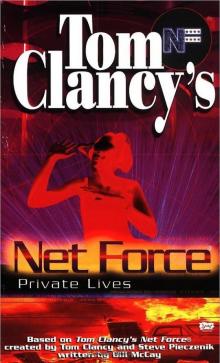 Private Lives nfe-9
Private Lives nfe-9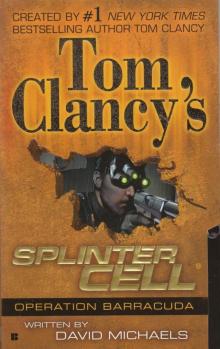 Operation Barracuda sc-2
Operation Barracuda sc-2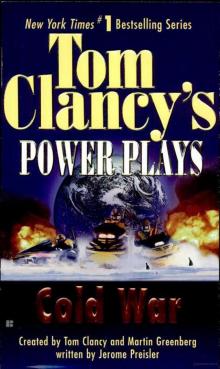 Cold War pp-5
Cold War pp-5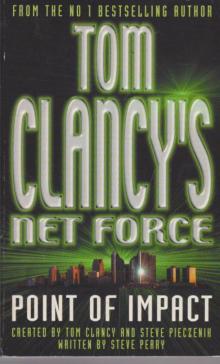 Point of Impact nf-5
Point of Impact nf-5 Red Rabbit jr-9
Red Rabbit jr-9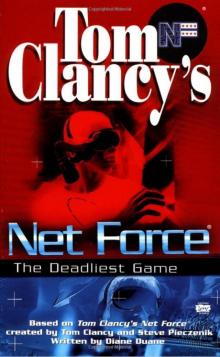 The Deadliest Game nfe-2
The Deadliest Game nfe-2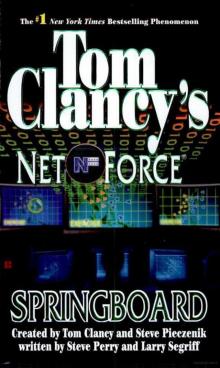 Springboard nf-9
Springboard nf-9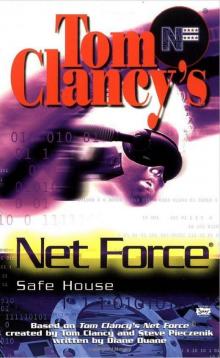 Safe House nfe-10
Safe House nfe-10 EndWar e-1
EndWar e-1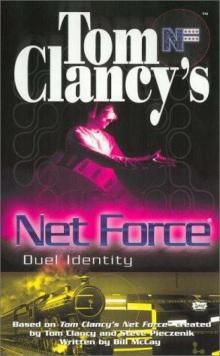 Duel Identity nfe-12
Duel Identity nfe-12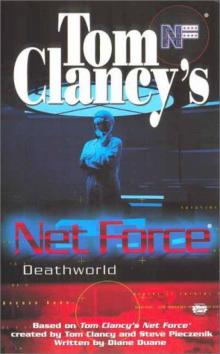 Deathworld nfe-13
Deathworld nfe-13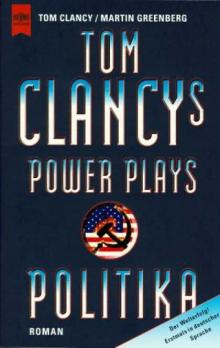 Politika pp-1
Politika pp-1 Rainbow Six jr-9
Rainbow Six jr-9 Tom Clancy's Power Plays 1 - 4
Tom Clancy's Power Plays 1 - 4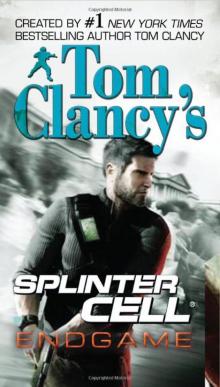 Endgame sc-6
Endgame sc-6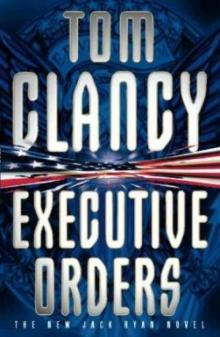 Executive Orders jr-7
Executive Orders jr-7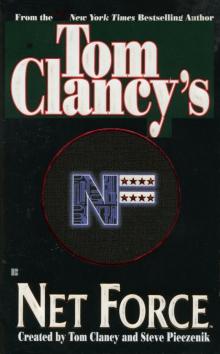 Net Force nf-1
Net Force nf-1 Call to Treason o-11
Call to Treason o-11 Locked On jrj-3
Locked On jrj-3 Against All Enemies
Against All Enemies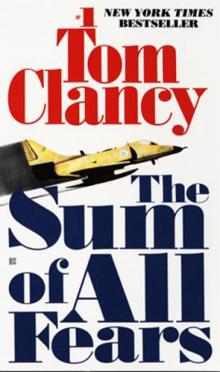 The Sum of All Fears jr-7
The Sum of All Fears jr-7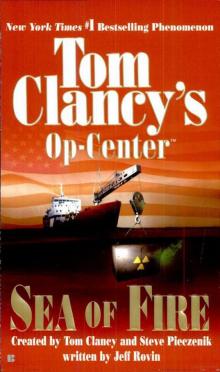 Sea of Fire o-10
Sea of Fire o-10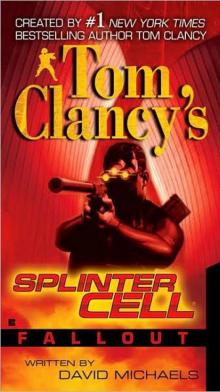 Fallout sc-4
Fallout sc-4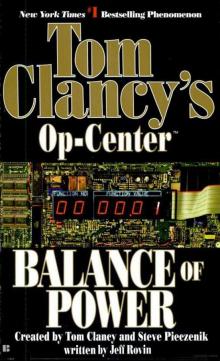 Balance of Power o-5
Balance of Power o-5 Shadow Watch pp-3
Shadow Watch pp-3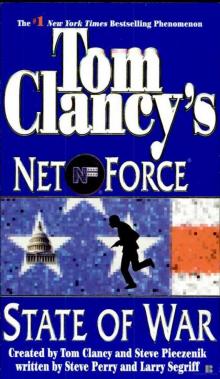 State of War nf-7
State of War nf-7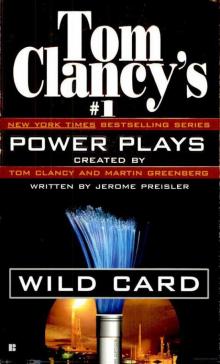 Wild Card pp-8
Wild Card pp-8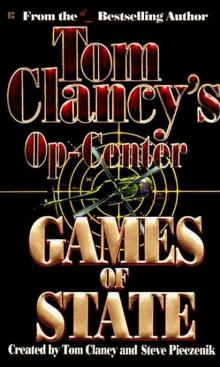 Games of State o-3
Games of State o-3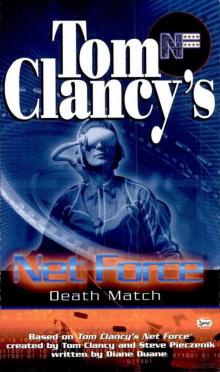 Death Match nfe-18
Death Match nfe-18 Against All Enemies mm-1
Against All Enemies mm-1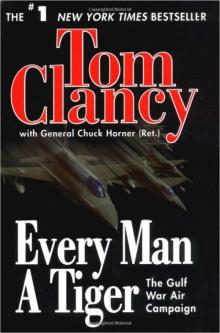 Every Man a Tiger: The Gulf War Air Campaign sic-2
Every Man a Tiger: The Gulf War Air Campaign sic-2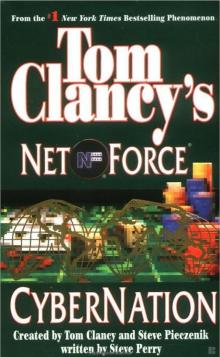 Cybernation nf-6
Cybernation nf-6 Support and Defend
Support and Defend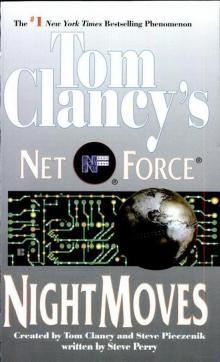 Night Moves nf-3
Night Moves nf-3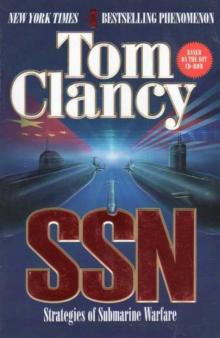 SSN
SSN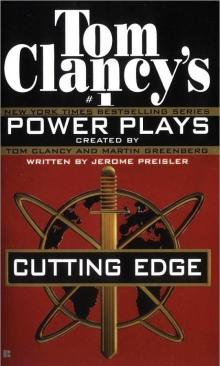 Cutting Edge pp-6
Cutting Edge pp-6 The Cardinal of the Kremlin jrao-5
The Cardinal of the Kremlin jrao-5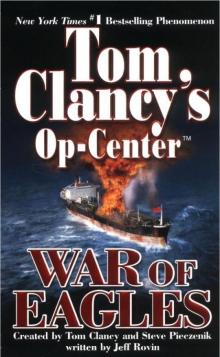 War of Eagles o-12
War of Eagles o-12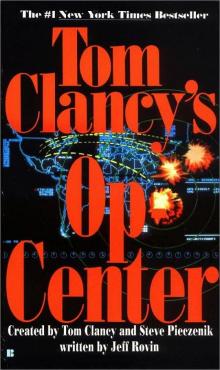 Op-Center o-1
Op-Center o-1 Mirror Image o-2
Mirror Image o-2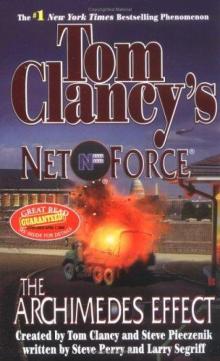 The Archimedes Effect nf-10
The Archimedes Effect nf-10 Teeth of the Tiger jrj-1
Teeth of the Tiger jrj-1 Bio-Strike pp-4
Bio-Strike pp-4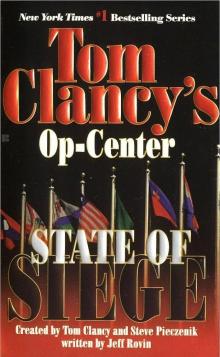 State of Siege o-6
State of Siege o-6 Debt of Honor jr-6
Debt of Honor jr-6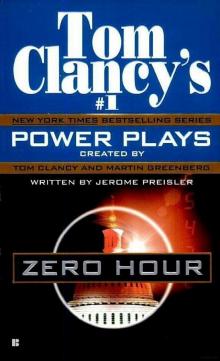 Zero Hour pp-7
Zero Hour pp-7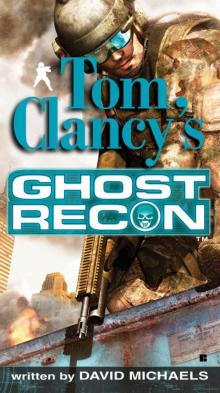 Ghost Recon gr-1
Ghost Recon gr-1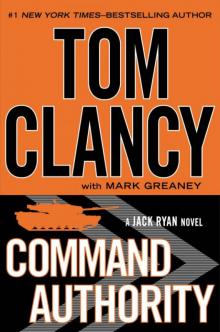 Command Authority jr-10
Command Authority jr-10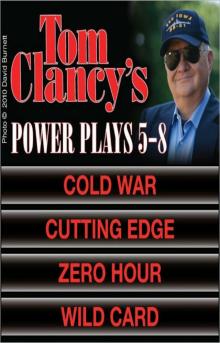 Tom Clancy's Power Plays 5 - 8
Tom Clancy's Power Plays 5 - 8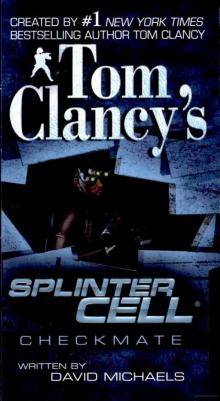 Checkmate sc-3
Checkmate sc-3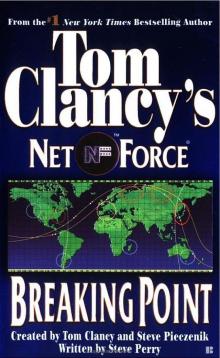 Breaking Point nf-4
Breaking Point nf-4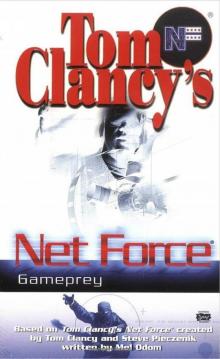 Gameprey nfe-11
Gameprey nfe-11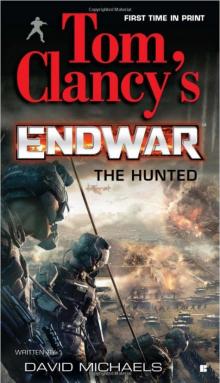 The Hunted e-2
The Hunted e-2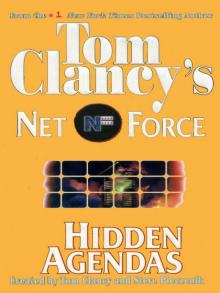 Hidden Agendas
Hidden Agendas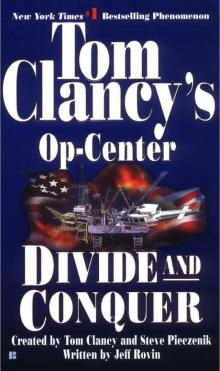 Divide and Conquer o-7
Divide and Conquer o-7